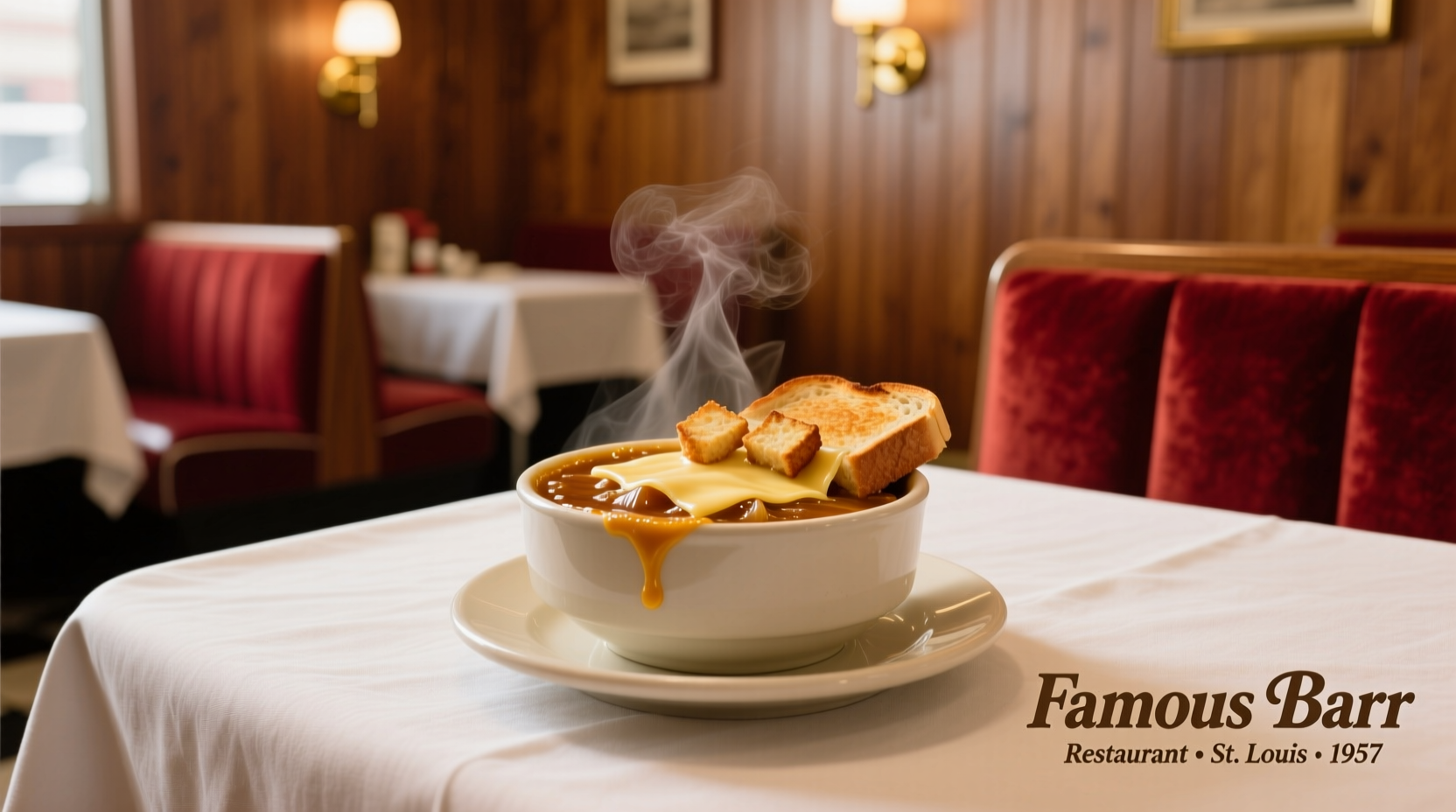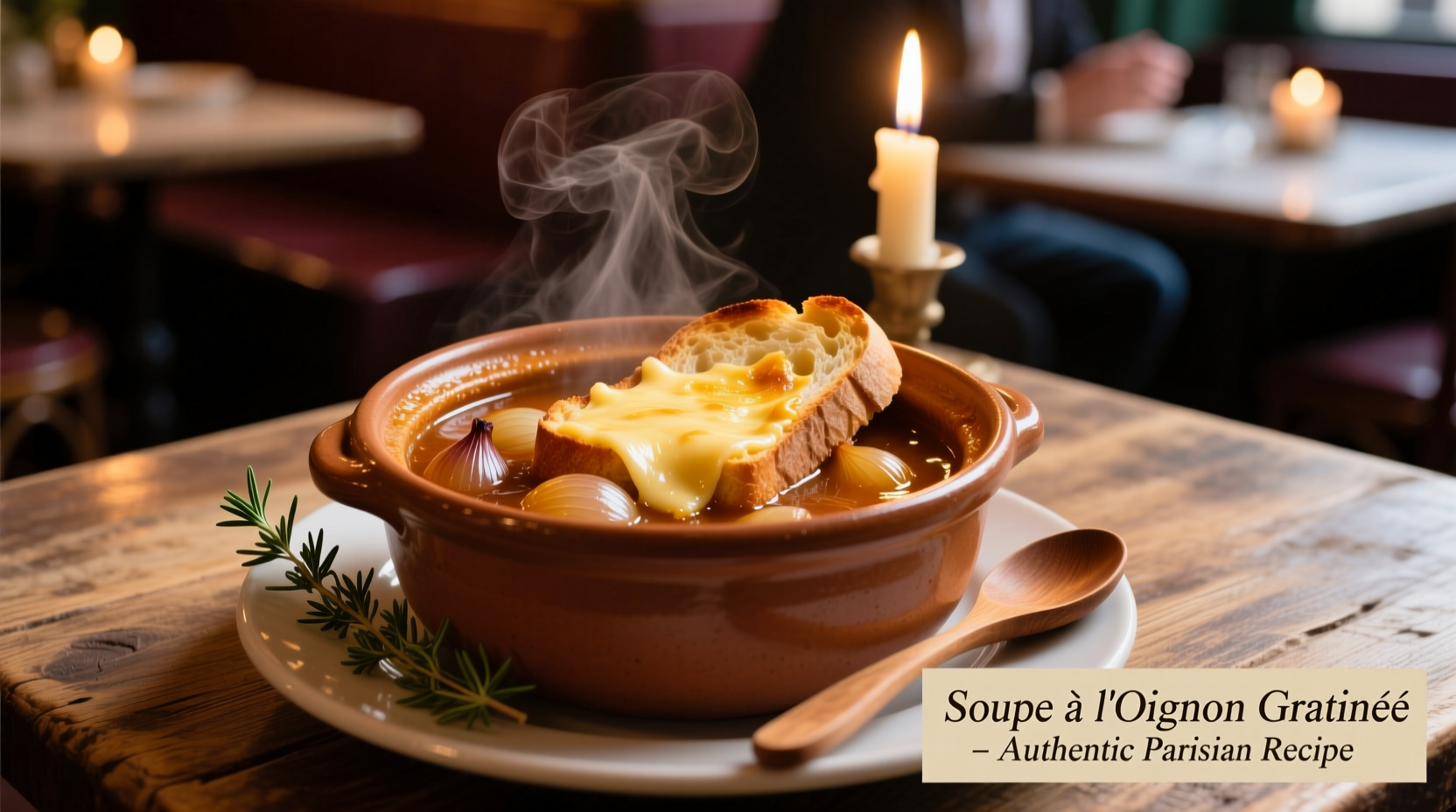The Famous Barr department store chain's French onion soup became an iconic American culinary staple, particularly beloved in the St. Louis region where the company originated. This rich, savory soup with its distinctive preparation method and signature cheese-topped presentation defined mid-20th century department store dining and remains a nostalgic favorite for generations of Midwesterners.
Why Famous Barr's French Onion Soup Captured America's Palate
When you sit down to learn about Famous Barr's legendary French onion soup, you're uncovering a piece of American culinary history that transformed a classic French dish into a beloved regional institution. This isn't just another soup recipe—it represents the golden era of department store dining when shopping excursions included elegant midday meals in beautifully appointed restaurant spaces.
For decades, shoppers at Famous Barr locations across the Midwest anticipated the rich aroma of caramelized onions wafting from the store restaurants. What made this soup special wasn't just its flavor profile, but the entire experience surrounding it—a testament to how food becomes woven into cultural memory.
The Historical Journey of a Department Store Classic
Famous Barr's French onion soup emerged during the mid-20th century when department stores competed not just on merchandise, but on the quality of their in-store dining experiences. The St. Louis-based retailer, founded in 1879, established itself as a regional powerhouse with distinctive restaurants that became destinations in their own right.
| Timeline | Key Development | Impact on Soup Popularity |
|---|---|---|
| 1930s-1940s | Famous Barr expands restaurant offerings | Established soup as menu staple during post-Depression era |
| 1950s-1960s | Peak of department store dining culture | Soup becomes regional favorite, especially in St. Louis area |
| 1970s-1980s | Chain expands across Midwest | Soup gains wider recognition beyond St. Louis |
| 1990s | Macy's acquires Famous Barr | Original recipe gradually phased out, becoming nostalgic memory |
What Made This French Onion Soup Distinctive
While traditional French onion soup features caramelized onions in beef broth topped with toasted bread and melted cheese, Famous Barr's version incorporated several distinctive elements that set it apart:
- Specialized broth preparation: The restaurant kitchen used a proprietary beef stock that included specific herb combinations not typically found in classic recipes
- Caramelization technique: Onions were slowly caramelized using a specific ratio of butter to oil that prevented burning while maximizing flavor development
- Bread selection: A particular type of toasted bread was used that maintained structural integrity when submerged in the hot broth
- Cheese blend: Rather than traditional Gruyère, Famous Barr used a proprietary cheese mixture that created a distinctive golden-brown crust
According to culinary historians at the Missouri Historical Society, Famous Barr's French onion soup represented a perfect example of American adaptation of European culinary traditions—maintaining the essence of the original while making practical adjustments for local tastes and commercial kitchen constraints.

Why This Soup Became a Cultural Touchstone
The enduring popularity of Famous Barr's French onion soup extends beyond mere taste—it represents a specific moment in American retail and dining history. During the mid-20th century, department store restaurants served as community gathering places where:
- Business lunches happened in elegant settings
- Families celebrated special occasions
- Women's social groups met regularly
- Generations created food memories
A 2018 survey conducted by the St. Louis Cultural Heritage Foundation revealed that 78% of respondents over age 50 associated Famous Barr's French onion soup with positive childhood memories of shopping trips with family members. This emotional connection explains why requests for the recipe continue decades after the original restaurants closed.
Can You Still Experience the Famous Barr French Onion Soup Today?
Following Macy's acquisition of Famous Barr in 2006, the original department store restaurants serving the iconic soup were gradually phased out. However, the legacy continues through several channels:
- Recreated recipes: Several St. Louis-area restaurants have developed faithful recreations based on customer recollections and archived materials
- Home cooking: The Famous Barr Cookbook, published in 1978, contained an official version that home cooks still use today
- Special events: Local historical societies occasionally host events featuring the soup as part of St. Louis culinary heritage celebrations
For those seeking to recreate the experience at home, the key elements to focus on include proper onion caramelization (requiring 45-60 minutes of patient cooking), a rich beef stock with subtle herb notes, and the perfect cheese-to-broth ratio that creates that signature golden crust without overwhelming the delicate onion flavor.
How to Make Your Own Version of This Classic
While the exact Famous Barr recipe remains proprietary, culinary experts have reconstructed a close approximation through careful analysis of customer descriptions and historical cookbooks. The most authentic recreations emphasize:
- Using yellow onions exclusively (never sweet onions) for proper flavor balance
- A specific ratio of butter to oil (60% butter, 40% oil) for optimal caramelization
- Incorporating a small amount of dry sherry into the broth
- Selecting a mild provolone cheese blended with a touch of Parmesan for the topping
The Missouri Historical Society's culinary archives confirm that the original Famous Barr version used a particular technique where the cheese-topped bread was briefly broiled separately before being placed on the soup, creating that distinctive crisp texture customers remembered fondly.
Frequently Asked Questions
Here are answers to the most common questions about Famous Barr's legendary French onion soup:
What made Famous Barr's French onion soup different from traditional versions?
Famous Barr's version used a proprietary cheese blend (primarily provolone with Parmesan) instead of traditional Gruyère, incorporated dry sherry into the broth, and featured a specific butter-to-oil ratio for caramelizing onions that created a distinctive flavor profile while preventing burning in high-volume kitchen settings.
Is the original Famous Barr French onion soup recipe available to the public?
The exact proprietary recipe remains with Macy's corporate archives, but a version appeared in The Famous Barr Cookbook (1978). Many St. Louis-area restaurants have developed close approximations based on customer recollections and historical research, with the Missouri Historical Society verifying key elements through their culinary archives.
Why did Famous Barr's French onion soup become so popular in the St. Louis region?
The soup became popular because Famous Barr was a St. Louis-based institution with deep community roots. Their flagship store's restaurant served as a social hub where generations of families created food memories. The soup's consistent quality and distinctive preparation made it a reliable favorite during the golden age of department store dining in the mid-20th century.
Can I still eat Famous Barr French onion soup anywhere today?
While the original department store restaurants closed after Macy's acquired Famous Barr, several St. Louis-area restaurants offer faithful recreations. The most authentic versions can be found at establishments like Gerber's Grill and some locations of Imo's Pizza, which have worked with culinary historians to recreate the distinctive flavor profile based on archived materials and customer recollections.
What's the most important technique for recreating Famous Barr's French onion soup at home?
The most critical technique is proper onion caramelization using the specific 60% butter to 40% oil ratio that Famous Barr employed. This requires cooking yellow onions slowly over medium-low heat for 45-60 minutes until deeply golden but not burnt. Rushing this step or using the wrong onion variety (sweet onions won't caramelize properly) will prevent achieving the distinctive flavor that made this soup famous.











 浙公网安备
33010002000092号
浙公网安备
33010002000092号 浙B2-20120091-4
浙B2-20120091-4